














My COMMUNITY Spirit Magazine (MCS), is published every 3 months by Encompass Ministries, Inc., a 501c3 faith-based non-profit, organized in 1998. Now in our 26th year, we continue to expand services and reach. As always, we are committed to providing timely resources, whether it be food assistance, training for family stability, as well as a myriad of Life Skills taught off-site in Addictions Recovery and At-Risk Youth programs. Our goal is always to enhance personal and family development for all walks of life. Food assistance touches six Metro Atlanta counties.
This publication is simply an extension of the work we do in-house and throughout the community. Within these pages you will find articles that will inspire you and stories of strength and courage. You will catch the spirit of encouragement within the articles written by thoughtful writers.
Advertising in MCS is available. After the publication costs, the proceeds go directly into the non-profit's mission, to feed the hungry and help families get jobs and ultimately, get on their feet.
The advertisements in MCS are meant to promote businesses, services; anything that someone wants to buy, sell, or exchange. Encompass Ministries in no way represents the quality or trustworthiness of these printed solicitations, so due care is needed when responding to any information presented. MCS reserves the right to decline advertising material that is deemed inappropriate.
Please consider Encompass Ministries in your monthly giving. We depend on local financial support to continue to offer stability training and groceries to those in our community. Donations are tax-deductible.

The mission of Encompass Ministries is to help individuals and families (re)establish stability and self-reliance by offering a variety of programs including immediate food assistance, employment strategies, and life skills through hands-on support and ongoing training in order to have a community where everyone has the tools to achieve stability and no one goes to bed hungry.








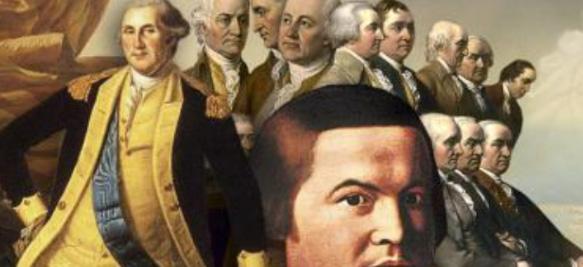



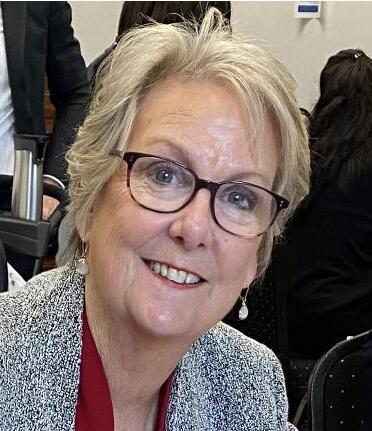
Hello, Friends,
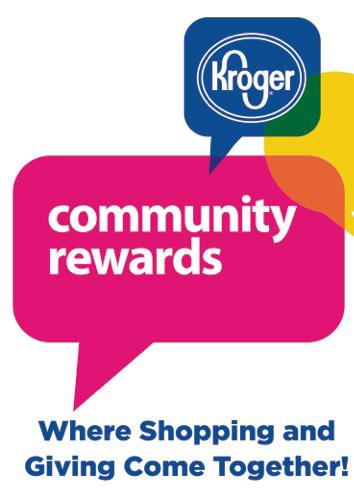
Lynne Saunders Lynne@EncompassMinistriesInc.org
Founder and CEO of Encompass Ministries, Papa’s Pantry, The Master’s Training Center, Editor of My Community Spirit Magazine, Ordained Christian Minister, CEO of 102.9 FM Grace Radio, Author, “21st Century Keys to EMPLOYMENT” Wife, Mother of 3, Grandmommy to 6, Dog-Mom to Alex, and an American Patriot.
2024 is turning out to be one hot year! Yes, temperatures this summer are already stressing out our air conditioners.
More than temperatures are running hot these days...
From a ministry perspective, food needs are hotter than ever. Kids are out of school which naturally brings in a fair share of families who struggle to feed their kids during the summer.
We are also seeing a great deal of new senior citizens. While increased costs of everything has affected most everyone, we are seeing an alarming rate of seniors who simply cannot make ends meet each month. Some are putting off retirement because financially, they are no longer able to meet expenses and can't lose what they already have coming in. Others who have retired are considering going back to work, but the likelihood of finding something in today's job market that they as an older worker can do is pretty slim. Then there are those seniors who have trouble just keeping up with their own daily needs and are no longer able to work. There are no easy answers or options.
Price increases, as I've eluded to, are already a hot topic! At Encompass Ministries, like many families, we are taking a look at ways to reduce our own expenses. One item is the printing of this publication. Simply put, paper costs have skyrocketed.
My Community Spirit is our leading Advocacy tool that tells the story of what is important to you, our families, and community. Topics range from inspirational Christian living moments, client struggles to success, life management, health & nutrition, and topics that relate to the season at hand.
We've been able to directly trace clients, donors, and volunteers who learned about Encompass and our services through this magazine. How do you count those costs?
A few years ago we unsuccessfully tried to make this an

Published by Encompass Ministries 501(c)3 6551 Commerce Pkwy Woodstock, GA 30189
Encompass Phone: 770-591-4707 Papa's Pantry Phone: 770-591-4730
The Master's Training Center Phone: 770-591-9588 encompassministriesinc.org
online magazine only, rather than printing paper copies. Our phones began to ring when the magazines stopped arriving in mailboxes and public racks. I talked to donors for their thoughts. The overwhelming response was, “I like holding it in my hands." I agree, I much prefer to read something printed in hand rather than read something on my phone or computer. We kept printing.
With that said, we have adjusted and are now taking this magazine to a quarterly schedule rather than bi-monthly. Instead of 6 per year, there will be 4, beginning with this issue.
If you picked this up from a public rack and would like to receive it by mail, please let us know and we will gladly add you to our mailing list. If you find this to be important information and a great cause, I hope you will consider making a donation. I look forward to your thoughts and feedback.
Moving on to another hot topic today... our country. What does that have to do with Christian ministry? My answer, “EVERYTHING." I believe God gave you and me and our ancestors who trekked this land, a gift and a calling, that we know as The United States of America. We should all walk in His ways and follow His leading to implement His will.
We may not all agree on every topic, however, there are some issues that I hope are important to everyone, no matter what side of the isle.
I invite you to read the back half of this publication for a quick trip through our early American history in light of this summer's historical holidays and upcoming election. Please share this history with your family and friends. Many don't realize the rich freedoms our ancestors fought for. I learned a lot in my research. We should all say, “I'm Proud to be an American!!"
Love Ya! Lynne

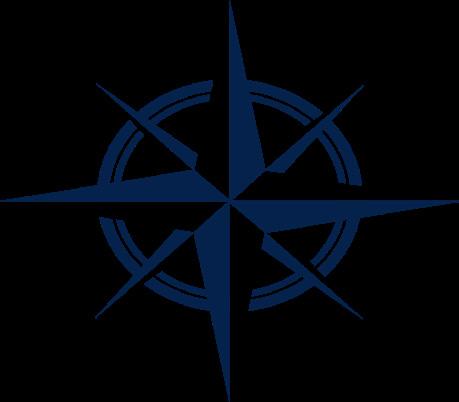

"Encompass IS..." Is an ongoing series that tells some of our clients' stories. Many times, there are challenges and struggles that test the strongest of grit and character. Real people with real stories.
To anyone who is fearful of the future, as you contemplate your next chapter, we hope this story shines a light and encourages you...
About two months ago, I found myself in a dire situation with no job and behind on all my bills. I am a single mom with two wonderful children. During this challenging time, Encompass Ministries, an organization dedicated to helping the community with food and job placement when needed, became my beacon of hope. Their support was instrumental in turning my life around.
Fears of the worst possible outcomes haunted me daily. I was behind on my bills, facing the potential repossession of my home, and struggling to put food on the table. The worst moment came when I received a statement from my kid's school, showing that their food accounts were running low and I couldn't afford to refill them. I felt utterly lost and defeated. I cried my eyes out, feeling like a failure as a parent, and in my desperation, I turned to prayer hoping for a miracle.
In my search for community help, Encompass Ministries /Papa’s Pantry was the first organization that came up. I wasn’t sure what to expect, but I knew I had to be open to any help available. From the moment I reached out, Encompass Ministries became a lifeline for me. They provided food, emotional & spiritual support and career guidance which gave me immediate relief from my worries. But their assistance didn’t stop there.

One of their dedicated staff members, Faith, played a crucial role in my journey. She helped me reorganize my resume, tailoring it to suit each job I applied for. Her expertise and patience were invaluable as I navigated the job market. Faith’s encouragement and practical advice boosted my confidence, making me feel
more prepared and optimistic about my prospects.
In the midst of this process, a company I had previously worked for reached out to me with an offer for a contract project. This opportunity came at a critical time, providing a much-needed financial lifeline. Their kindness and unwavering support extended beyond just professional guidance; they were always ready to offer prayers and words of encouragement, which kept my spirits high.
Thanks to their help, I not only successfully completed the project but also received an extension, which provided additional financial stability.
Moreover, my renewed resume and enhanced job search skills led to an interview with one of the leading IT companies for a remote position. This opportunity could potentially be a significant step forward in my career.
Encompass Ministries, through Faith's dedicated assistance, has made a profound impact on my life. Their comprehensive support system, combining practical help with emotional and spiritual encouragement, has been a source of immense strength and hope for me during a very difficult period. I am deeply grateful for their help and am optimistic about the future opportunities that lie ahead.
“'For I know the plans I have for you,' declares the Lord, 'plans to prosper you and not to harm you, plans to give you a hope and a future. '” — Jeremiah 29:11.
~Anonymous
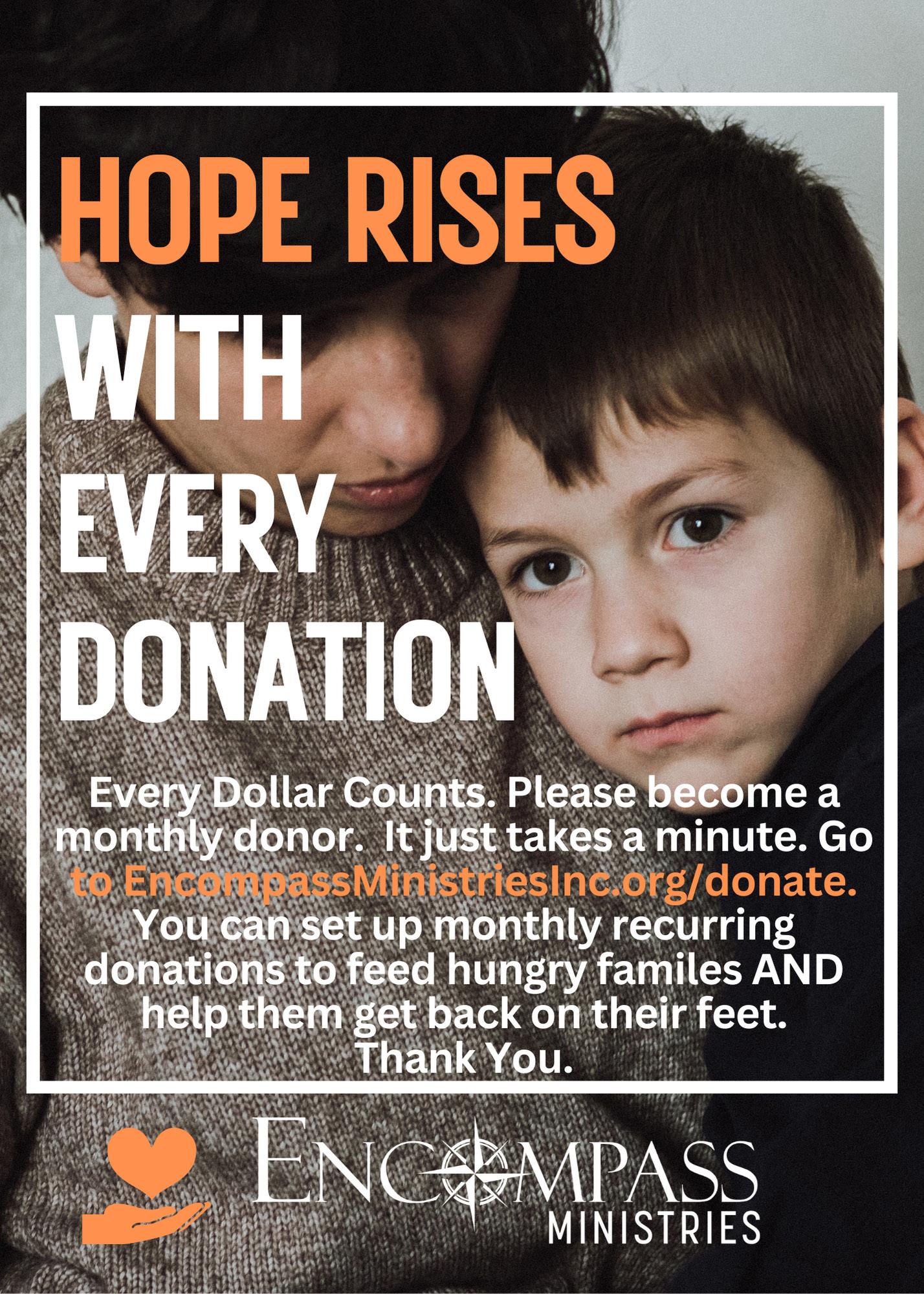
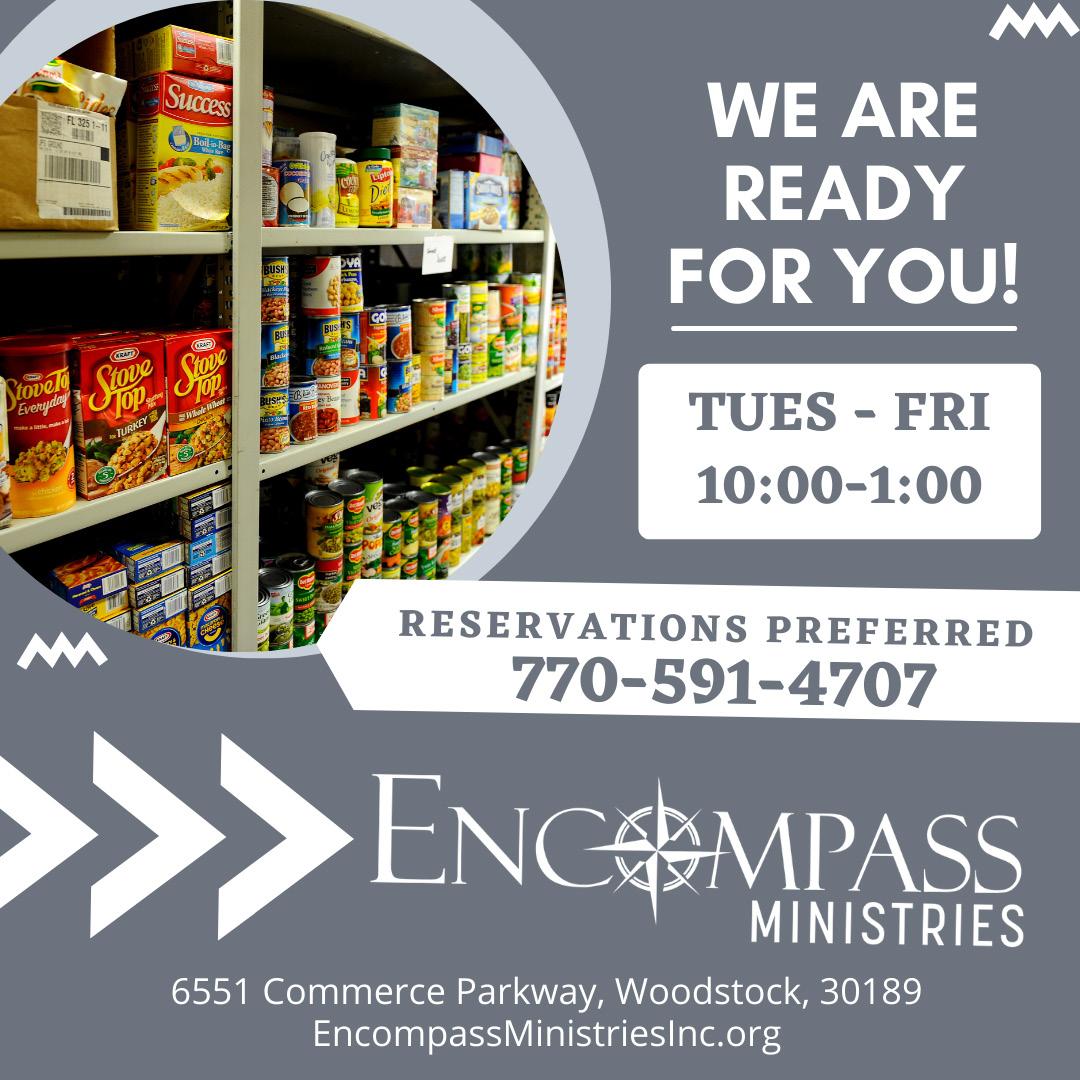

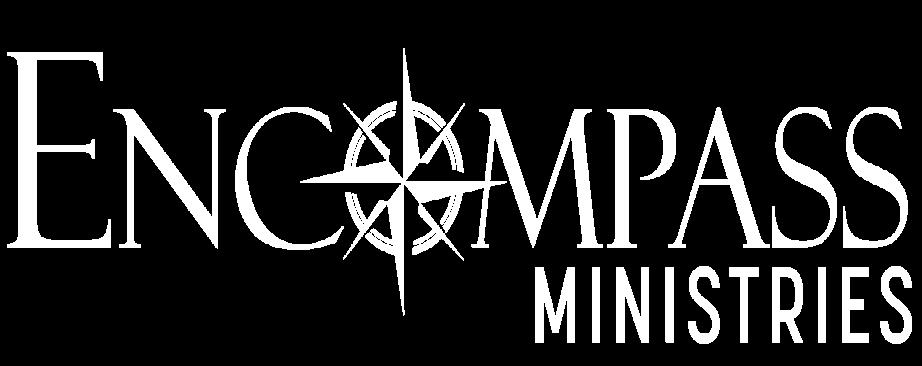
By Julianna Sproul

There is a time for everything, and a season for every activity under the heavens: a time to be born and a time to die, a time to plant and a time to uproot, a time to kill and a time to heal, a time to tear down and a time to build, a time to weep and a time to laugh, a time to mourn and a time to dance, a time to scatter stones and a time to gather them, a time to embrace and a time to refrain from embracing, a time to search and a time to give up, a time to keep and a time to throw away, a time to tear and a time to mend, a time to be silent and a time to speak, a time to love and a time to hate, a time for war and a time for peace.
Regardless of the season, I want to be outside. In the fall, I want to eat dinner sitting outside on a patio. In the spring, I want to ride in a convertible even if it means living on allergy medication. In the winter, I want to sit by an outdoor fireplace with a book drinking hot chocolate. In the summer, whether ocean, lake, river or pool, I want to be out there in the water enjoying the sunshine and fresh air. That is my favorite season.
As I sat recently in my beach chair for my first summer trip, staring at the ocean, I thought long and hard about the line in the above-mentioned scripture that says, “there is a time to mourn.” It was the 10th anniversary of my Dad’s passing and unfortunately, I was, and am still, mourning him. Many questions filled my mind. “Will I ever get over missing him?” “Should I go back to grief counseling?” “What does it even look like to not mourn my Dad?” Needless to say, I still ponder those questions as I proceed daily in life without my father around. I hated when people asked me if I had adjusted to the “new normal” after he passed. In my opinion, there is nothing normal about my life without my Dad.
So, I return to the scripture and I focus on the words “there is
a time to be born and a time to die… and a time to weep and a time to laugh.” I love to laugh! Weeping causes me to have a headache and puffy eyes. I would much rather laugh. And going back to the word of God again, I am reminded that, we do not grieve without hope. We can be encouraged by the words in 1 Thessalonians 4 that says, “We will be caught up together with them in the clouds to meet with the Lord forever.”
I’ve had lots of happy seasons. One of the most joyous was when my niece Campbell was born. She truly completed our small little family and she became (and still is) the joy of our lives. She had the funniest personality and would say the cutest things. As an example, my Mom was once washing fresh green beans and Campbell came in the kitchen and said, “Nana, it smells so green beany in here.” Now she is a teenager. Before we know it, she will be going off to college and the time that we have with her will be limited. I’m not even ready to start thinking about that!!
I am grateful that the Ecclesiastes scripture reminds us that seasons change. There are some seasons that we look forward to in life and some that we dread. Life is constant highs and lows, mountain tops and valleys, wastelands and streams in the desert, ashes to beauty.
We have to remember that we cannot control the seasons and no matter what season that we find ourselves in, God is with us.
One of my favorite passages is Psalm 139:1-10, “You have searched me, Lord, and you know me. You know when I sit and when I rise; you perceive my thoughts from afar. You discern my going out and my lying down; you are familiar with all my ways. Before a word is on my tongue you, Lord, know it completely. You hem me in behind and before, and you lay your
hand upon me. Such knowledge is too wonderful for me, too lofty for me to attain. Where can I go from your Spirit? Where can I flee from your presence? If I go up to the heavens, you are there; if I make my bed in the depths, you are there. If I rise on the wings of the dawn, if I settle on the far side of the sea, even there your hand will guide me, your right hand will hold me fast.”
We don’t get to choose the season we are in. However, we can choose joy instead of sorrow, choose trust instead of fear, choose love instead of hate, and choose to believe instead of doubt that “all things work together for good to those who love God and are called according to His purpose” (Romans 8:28).
We have to know that even when seasons change or circumstances change, the Lord doesn’t. “He is the same yesterday, and today and forever” (Hebrews 13:8). Seek to be faithful to Him through it all. Learn the word of God. It is filled with promises. Learn to be patient and realize that the hard season won’t be hard forever. Life, as with grief, may be unpredictable but Jesus is not. His mercies are new every morning (Lamentations 3:23).
“Highs & Lows," Song by Hillsong Worship; you can listen on any streaming platform:
When it feels like the dark Lingers longer than the night When the shadows feel like giants Are You chasing me down?
Tell me where could I run
From Your light, where could I hide Hemmed within Your precious thoughts
There's no hiding from Your love
Highs and lows
Lord, You're with me either way it goes Should I rise or should I fall?
Even so, Lord, Your mercy is an even flow You're too good to let me go
Should I dance on the heights Or make my bed among the depths Your mercy waits at every end Like You planned it from the start
Should the dawn come with wings Or find me far-side of the sea There Your hand still fastens me Ever closer to Your heart
Highs and lows
Lord, You're with me either way it goes Should I rise or should I fall?
Even so, Lord, Your mercy is an even flow
Should I rise or should I fall? You are faithful through it all You're too good to let me go
Highs and lows
You surround me either way it goes Should I rise or should I fall?
Lord, You're with me through it all
Highs and lows
In the rhythms of Your grace I know Should I rise or should I fall?
You are faithful through it all And You're too good to let me go
Julianna Sproul is a self-proclaimed church-nerd; her adult life serving at Mount Paran Church of God, and for almost a decade working on staff for Lead Pastors David & Barbie Cooper. She received Pastoral credentials in 2023. Julianna desires to be a vehicle through which others can see that Jesus can redeem and restore anyone, no matter their past. She gives God all the glory and honor for His unconditional love.


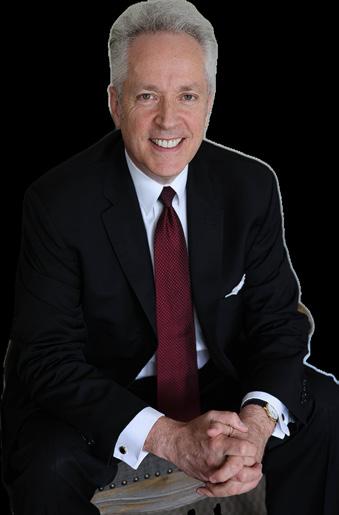

Do you ever wonder if God is broken-hearted over your situation? If he cares?
Stop. Read the question again. Give yourself permission to truthfully consider your answer. Do you ever wonder if God cares?
Some reading this will answer a resounding NO! I never wonder. You know John 3:16 by heart and every sermon you’ve ever heard preached has some reassurance of God’s love for you. You are rock solid in your faith and never waiver. If that’s you, I want to become you because that’s not me.
Others reading this also answered a resounding NO! I never wonder but for an entirely different reason. You aren’t even sure there is a God to care. The unbidden and possibly unwanted whisper of your heart asks if there is any hope, any future that is better than this, right now.
As a Christian, I waiver. On my best days, my answer is NO! I never wonder is wobbly. On the days I give voice to the doubt, I shout YES! I wonder all the time – does God care? Is he as broken-hearted as I am? My brain tells me I do not need to wonder. My heart, however, wants to know why I feel so alone, left out, overlooked, unseen, unheard and myriad other things when God sent his one and only Son so that I’d know I was loved. Because, those feelings don’t feel like love to me. I believe in God. I believe in Jesus Christ as my Savior. But sometimes, that unbidden whisper is there for me too.
Maybe this doesn’t describe you right now. But I bet it describes someone you know. Someone who needs their heart ministered to so that it can believe that yes, they are loved. Yes, they are seen. Yes, they are known. And yes, God cares.
I believe the answer that we desperately need to know is found in one word. One word that, if we let God define us with it, if we claim it as our rightful identity, will bring the
By Denise Roberts
peace our hearts’ whispers seek.
He named her Daughter.
Mark’s Gospel tells us about a woman who had suffered for 12 years from a serious health issue. A bleeding health issue. She’d spent everything she had on doctors who were unable to help her. She was destitute – and by this time, desperate. But when Jesus came into town, and knowing of his healing reputation, she risked everything to venture into the crowd, and push her way to the front. She didn’t want to meet Jesus, she only wanted to touch his cloak. Immediately, as her fingers brushed the fringe of his garment, her bleeding stopped. She knew she’d been healed.
Jesus knew at once that God had healed someone through him. He felt the power go out. She may not have intended to meet Jesus, but Jesus intended to meet her. He stopped, looked around, and asked, “Who touched my clothes?” Instead of running away, she came forward, fell at his feet and, trembling with fear, told him her whole story.
Then Jesus speaks the most beautiful words to her. “Daughter, your faith has healed you. Go in peace and be freed from your suffering” (Mk 5:15-34, selected verses)
There's quite a bit we do not know about the woman in this passage. We don’t know her name, if she’s single, married, a mother, or her age. We do not know the nature of her illness. We don’t know where she lived – exactly. We don’t know, for sure, that she’s Jewish.
There are, however, some things we do know and others we can presume and discern. This encounter most likely took place in Capernaum, a predominantly Jewish city with a prominent synagogue.
Because of the prevalence of the Jewish community, even though we don’t know for certain this woman was Jewish, we can be certain that the Jewish cleanliness laws were imposed upon her. And while we do not know the exact nature of her
illness, we know it involved continuous bleeding. This is an important detail. If she was Jewish, and I do believe she was, constant bleeding rendered her unclean according to the laws. She couldn’t touch anyone or anything. No one would dare touch her. She was cut off from life in the faith community. She was an outcast. Exiled. Unseen. Unknown. Wondering if there was any hope for a future that was better than this, right now.
I bet she wondered if God cared.
Hundreds of years earlier, God gave the Prophet Isaiah these words to speak to and over the nation of Israel:
The LORD has made proclamation to the ends of the earth: “Say to Daughter Zion, ‘See, your Savior comes! See, his reward is with him, and his recompense accompanies him.’” They will be called the Holy People, the Redeemed of the LORD; and you will be called Sought After, the City No Longer Deserted. (Is 62:11-12)
The nation of Israel, the chosen people of God, the people God had once redeemed from slavery, the people who knew the very presence of God with them, the people who were to be called by his name, the people who had promised to worship God and only God – they were the Daughter of Zion.
But the Northern Kingdom of Israel had fallen to the Assyrians and been exiled out of the land. The Temple would be destroyed and Judah would soon be conquered by the Babylonians and exiled from their home.
Life as they knew it abruptly ceased. There were no longer able to worship in the way they knew. They were outcast. Unseen. Unknown. Deserted. Wondering if there was hope for a future that was better than this, right now.
When Isaiah preached these words, he was speaking them forward – a couple hundred years forward - to the exiled nation of Israel. He promises them a Savior, redemption, restoration. They will once again be called the Holy People, the redeemed of the Lord. They will no longer be shunned, no longer be outcast, no longer be deserted. They will be called Sought After.
But first, he reminds them of who they are.
The promises would hold true because God first named them Daughter.
Isaiah’s words intersect with our woman’s life, our lives, just as they intersected the lives of the exiled Israelites so long ago – right here – in this name - Daughter.
Our desperate woman reached out with her last remaining shred of faith.
I don’t know this, but I see Jesus reaching out to her. Taking her by the hand. Drawing her up. And with all of the tenderness and love that God held for her in his heart, Jesus speaks these words to her.
Daughter, your faith has healed you.
Not woman. Not sister. Daughter.
This is the only time in the Gospels that Jesus calls someone daughter like this. In this story of this woman. The only time.
In Isaiah’s oracle, The Daughter of Zion would be rescued by her savior. They would be gathered to him, desirable, sought after, restored, redeemed, made holy. All because God first named them – universally, men and women – he named them Daughter.
These promises held true for our woman. God did not simply heal her of a physical ailment. He restored her life, physically, emotionally, and spiritually. She reached out in desperate hope and faith and he saved her through Jesus.
When Jesus calls her Daughter – he is speaking God’s heart towards her. He saw her. He knew her. He renamed her. And now she belonged to him. Yes, God cared.
If you are not a Christian, God desires to gather you back to him. His heart for you is to name you his Daughter too. With whatever shred of hope you may have left, reach out. Let him answer your heart’s whispered question does he care.
If you are a Christian, you are already named Daughter. In those moments when you wonder if God cares, when you have forgotten who you belong to, claim this promise as your own.
The LORD has made proclamation to the ends of the earth:
“Say to Daughter (insert your name),
‘See, your Savior comes!
See, you are his reward, You will be called the Holy People, the Redeemed of the LORD; and you will be called Sought After …
Denise Roberts loves good food shared with friends, slobbery dog kisses, doing life with her husband, being a mom to grown-up kids, and encouraging others to connect the life-giving and life-sustaining Word of God with the messy places of our lives. deniseroberts.org

By Lynne Saunders

It is hard to capture all of the financial safety advice in one article. As I finished writing for the previous issue, this follow-up piece began to brew. Securing our valuables is always a good idea, but in days like these, it is critical. In the last issue we covered Freezing Your Credit, Debit vs. Credit Cards, Alerts, and ended with What If... https://www.encompassministriesinc.org/community-news/
According to a Federal Bureau of Investigation report, in 2022 almost 850,000 burglaries took place nationwide, 28% being residential break-ins during the day.
Let's pick up here to continue the thought of What If and talk about the importance of in-home safes.
Who needs a safe? The correct answer is everyone who lives on their own. A safe is a place to keep important things safe. We all have personal items or documents that need to be protected.
How and where you live will dictate your options and choices. College students, your parents will likely maintain possession of your important documents until you become more stable in adulthood. Senior citizens who transition into smaller assisted living conditions will have reduced options, yet may live within a complex with security measures in place.
Where should you NOT place a safe? Your convenience should never be the priority. Your convenience will also mean the bad guy's convenience. People commonly place it in a home office area or near where bills are paid and paperwork stored. This and the master bedroom are generally the first choices. The next common place is a coat closet. Avoid these areas if possible.
Instead, consider areas in your home that are least used. What is recommended by experts is to find "low traffic, hard to find" areas of your home. Have you thought about the laundry room? Where do you store extra paper towels and toilet paper? Sound ridiculous? Exactly. Look around your home and determine the least likely, most difficult places. Yet, you should be able to access it without struggling.
There are several kinds of safes on the market, coming in a variety of sizes, opening options, and price points. Be mindful of what you will store and how much space you will need. Use a measuring tape and visualize the interior to determine more correctly.
Which leads to other questions: How many safes do you need? What will you be storing?

In the previous issue we established that good ol' fashioned cash should be on hand, the amount to be in line with what you may need to buy essentials such as food and gasoline in times when plastic cards don't work. How many weeks worth can you
Expect the Unexpected. Hope for the best, prepare for the worst.
Perhaps one safe is for important ORIGINAL documents such as birth certificates, marriage licenses, passports, and social security cards. Important documents also include living trusts, life insurance policies, wills, and title deeds. Yet, there are more items to consider such as credit cards for accounts seldom used, lease agreements, purchased mortgage and car contracts, and military discharge papers.
A new and greatly overlooked item to include in today's technological world is that of digital media. The most common way is to back up important files from a computer onto a small
device known as a “jump" or “thumb" drive or stick. These should include documents regarding banking, investments, medical records, and a list or spreadsheet of passwords. Consider critical contact information for professionals such as doctors, attorneys, and financial planners. Irreplaceable photos that are scanned and photos from your phone should also be included. Be sure all files are password protected with something you will not forget.
Another uncommon, yet important thing to safely protect are keys. Back ups to homes, properties, storage sheds, and other locked items should be included. While it may be unsettling to think that someone could gain access to these keys, remember, locks can be changed, and should be immediately if compromised.
If you have a secondary safe as a backup to these items, consider placing photo copies of what has already been mentioned as well as a copy of your driver's license, and a duplicate thumb drive.
If you have multiple safes, you should have cash in each of them. What if one safe is emptied, stolen, or destroyed? The other will still contain what you need in an emergency.
Consider this too, if someone breaks in and finds a safe, the likelihood of their continued search for another one reduces significantly. While both safes should be thoughtfully hidden, be sure the one containing the originals is the most difficult to find.
What about valuables? Beyond documentation of your personal identity, do you have gold, silver, valuable coins, heirlooms, or irreplaceable jewelry that you would be crushed if lost? Original stock certificates? These may be items to store in a bank's safety deposit box. The key to this box should be in your main safe, not on your everyday key chain.
A safe deeply and inconveniently hidden is not the perfect place to store guns, unless you are storing one as a non-dayto-day back up. Generally a gun safe which is designed to store collections of weapons would be a better option for general safety storage.
However, for middle of the night scares, there are safes that can be mounted bed-side for immediate emergency use. There are some that simply need your fingerprint to open. Gun safety should never be understated or taken lightly. Guns should never be casually placed in a nightstand drawer, especially when there are children or visitors in the house.
Speaking of visitors, never allow anyone to freely roam your home on their own. This list may include workmen, exterminators, or A/C service people. If you are unable to escort these folks, ask a trusted friend for help. Be sure caregivers such as home nurses and CNAs are bonded through their company.
Invest in a safe that is fire-resistant as a basic requirement. The higher rating of flame-resistant quality, the more expensive it will be. Note that even the most expensive fire-resistant safes
may not be entirely “fireproof.” They are rated from one to four hours and up to 2,000 degrees.
Waterproof may also be an important feature. The goal is protection. It's not always a burglar that will take away your assets.
For as many kinds of safes, there are as many mounting options. Most people have a free standing safe than can be placed in a closet or out of the way place. There are safes that can be screwed into the floor so they will not be carried off or tip over. This is especially important for large safes where children would be nearby. Wall/floor mounted or inserted safes are not practical if you are renting your residence, yet can be a great option for homeowners. Then you've got those James-Bond kind of safes that come out of the walls, floors... out of nowhere it seems. Your choices should be based on what and how much you are protecting, and your budget. Keep in mind that if you move, you may need to leave these attached safes behind, which may be a selling point. If you decide to take them with you, professional safe movers will be needed.
These are all important considerations to discuss with your spouse, so together you have an agreed-upon plan and accountability to each other to maintain the strictest of rules when handling any of the above-mentioned items.
Not much can replace Peace of Mind. <>< <>< <><

1:30-3:30
1:30-3:30
By Nancy McCarthy, Cherokee Master Gardener

Tomatoes, some will say, is the most coveted garden plant of all plants. When you talk to your neighbors about their garden, you are most likely to listen to what they are saying about their tomatoes. However, you never talk about your tomatoes unless you know they are superior to those of your friends.
Why are we so afraid to discuss tomatoes? That is because they are difficult to grow for a respectable harvest to enjoy with your family or share with friends. The intent of is article is to remove some misunderstandings and clarify what is really needed to produce a sizable yield and high-quality fruit. Let us all agree that tomatoes are fruits, not vegetables. Knowing this qualifies you to be a botanist or gardener. Tomatoes contains the seeds needed to reproduce, unless they are hybrids which also have seeds, but are less likely to reproduce.
Tomato plants are either determinate or indeterminates, which will ‘determine' the growing characteristic and length of production. Determinate tomatoes do not need staking yet produce tomatoes, or the terminal bud of every stem. They will produce at one time over a period of a few weeks. They are ideal for canning, sharing and producing heavy yields.
Indeterminate tomatoes produce tomatoes from clusters of blooms and continue to grow for the season, not bearing fruit at one time. This variety makes it ideal for feeding the family or sharing from July to October, assuming that you are managing diseases and insects.
Gardeners generally buy tomato plants without knowing if they are determinate or indeterminate. I personally prefer determinate and planting three plantings, two weeks apart. No stakes, less diseases and less work, but lots of tomatoes! The longer tomatoes are in your garden, the more likely you will have more diseases.
Fertilization is critical to tomato quality, yields, and flavors delivered to your table. Nutrient requirements are nitrogen,
phosphorus, potassium, calcium, magnesium, and other minor elements such as sulfur, zinc and iron. Each of these elements play a role in photosynthesis, respiration and fruit development and most importantly will aid in disease prevention and movement of water uniformly throughout the plant. Adequate calcium is the key element of the prevention of blossom-end rot. Potassium carries calcium to the fruit and uniform water transfers through the plant, when selecting nutrients, it is best if you use a fertilizer like 8-16-16 (N-P-K) instead of 10-10-10 fertilizer blend. Hence, this is 1 part nitrogen and 2 parts phosphorous and potassium. Lowering the nitrogen levels reduces abortion of tomatoes after fertilization.
When planting, it is wise to blend ¼ cup of powdered lime (CACO3) into the soil around each plant prior to planting for the prevention of blossom-end rot. When applying the 8-16-18, or similar analysis, it is best if you make the application around the base of the tomato plant to save money and focus on the plant itself, not broadcasting freely over the garden.
Should you choose organic fertilizers, apply the same nutrients levels as the traditional fertilizers, as discussed above. Organic fertilizers generally take 12-16 times more than traditional fertilizers for equal results. Plants require same nutrient levels in the soil regardless of fertilizer type (organic or traditional) applied to the tomatoes.
When fertilizers are balanced properly, tomatoes seeds and solids within the tomato should remain intact when sliced. If the seeds and gel fall from the tomato when sliced, study the nutrients applied this year and adjust prior to planting next season. In summary, 1/3 cup of 8-22-22 would require a minimum of 4 cups of organic fertilizer to provide healthy nutrient program.
Deciding on heirloom tomatoes or new varieties is up to you and what you find. Each has advantages and disadvantages. Lots of us like to follow tradition and plant heirlooms for flavor, but they
generally have cracks and other blemishes which are fruit quality issues.
There are no GMO tomatoes, as discussed often in garden groups. New varieties are generated through plant breeding for better storage and flavors. Never judge a tomato that you purchase from stores during winter months. They were generally harvested as matured greens and put into an ethanol chamber to promote ripening. Enhanced ripening does not generate enhanced flavors. Select plants that resist cracking, resist disease and splits and your tomatoes will have a greater shelf life.
Disease management always makes the difference between success or a short season. Taking a proactive position for disease control is the best decision you can make.
Start with mulching on the ground surface surrounding each plant. Disease control starts with healthy plants, soil biology and adequate nutrition up front. Like us, an unhealthy diet is setting the stage for disease problems. Once you get the disease, it is tough to control, and plants will decline rapidly.
After planting, start with the application of sprayable sulfur every 10 days. Sulfur will control bacterial diseases and powdery mildew, as well as build a healthy plant. The unused sulfur will convert to sulfate which improves respiration within the plant. For the home
gardener start applying Daconil (chlorothalonil) on a 14-day spray interval after first bloom set along with sulfur added to spray mixture every other time. Chlorothalonil fungicide will not control late blight. If you are using copper products, do not over apply to avoid burning the foliage.
When is the ideal time to harvest my tomatoes? Once the blossom end of the tomatoes turns slightly pink, you can harvest. Place them on the counter and wait until they totally ripen to your desired redness. It will have the same flavor as a vine ripened tomato and they are removed from the environmental impact of insect, birds, rain and diseases. Nutrients required for flavor and storage quality are transferred to the tomato once its blossom end is slightly pink.
In summary, keep plants healthy, through proper nutrition, select plants that have resistance to many diseases, water moderately, mulch to avoid diseases and treat diseases before occurrence. If you follow the above recommendations, it is highly likely that your neighbors will get to enjoy some of your harvest.
Native of Toledo, Ohio but a Georgia Peach for the last 38 years. -Graduate of Bowling Green State University BSE -Retired Realtor 35 years . Cherokee County Master Gardener since 2019 – Co chair of Encompass Ministries/ Vegetable Garden. Come see Us!
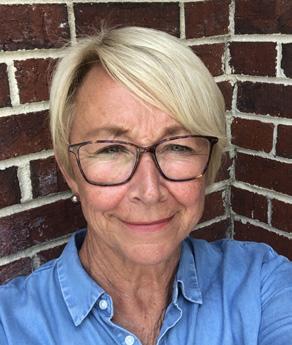
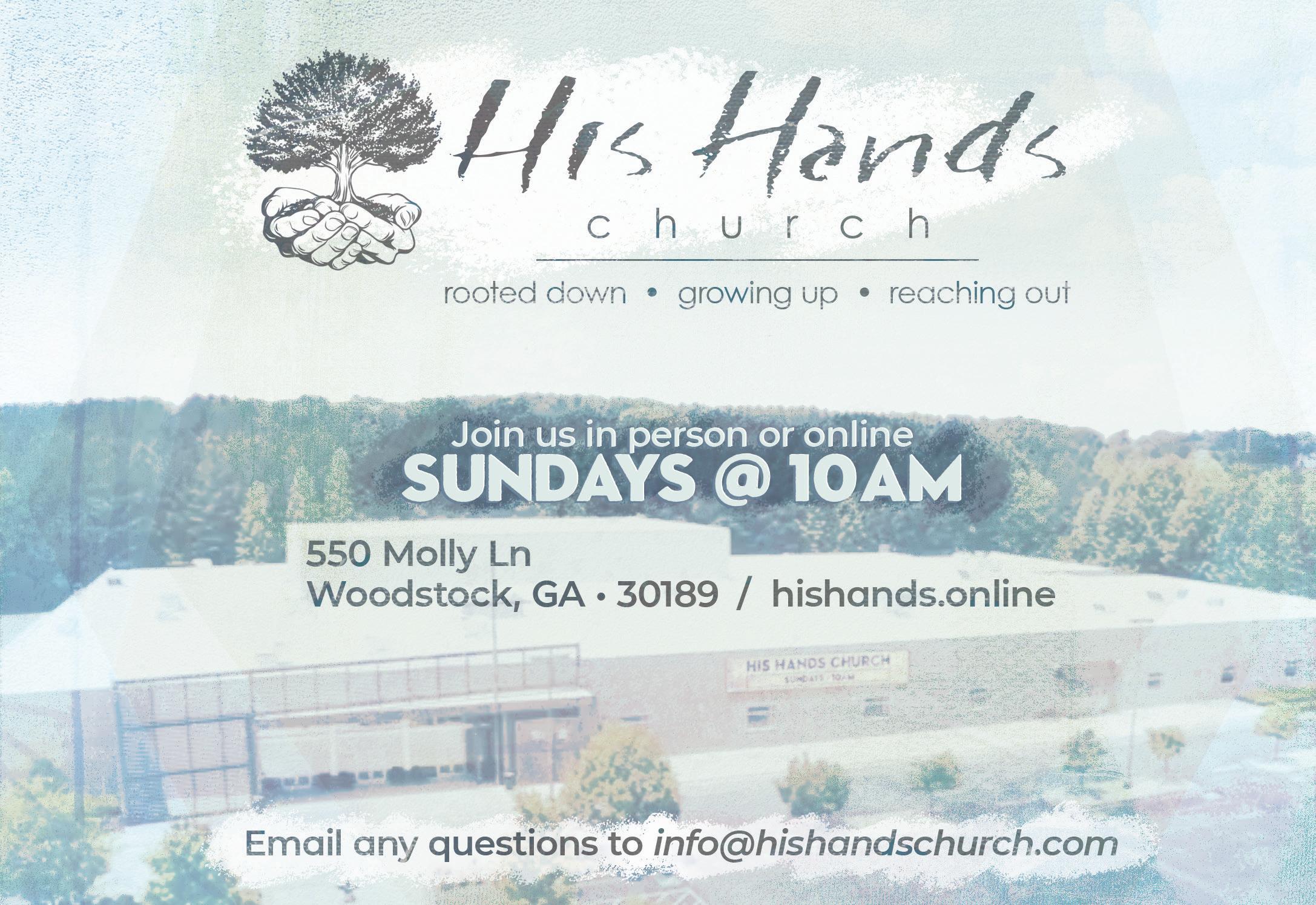

On June 10th I had the honor of being with my Mother-in-Law, family, and friends to celebrate Mrs. Levato “Vetti” Thomas’ 100th birthday.
On Saturday, June 8th we had a beautiful gathering at her church, The Church of the Brethren Gettysburg, Pennsylvania. It was a weekend celebration to honor a woman who has lived by her motto “live simply so others can simply live.”
Folks are amazed by Vetti. She still lives in her own home by herself, drives to the grocery store, works in her garden, cooks meals for herself and others. She volunteers at the WWII museum as a guest speaker and is an active member in her church.
What is her secret? How does a person live to 100 years old and continue to have a wonderful quality of life? In 2000, Dan Buettner, a National Geographic Explorer and journalist traveled to Okinawa, Japan to study the longevity of people there. In 2004, he coined the phrase “Blue Zone.” He has since identified other geographical areas with similar longevity.
• Okinawa, Japan
• Ikaria, Greece
• Loma Linda, California, US
• Sardinia, Italy
• Nicoya, Costa Rica
These people share nine commonalities, referred to as the “Power 9.”
Move naturally, the world’s longest living individuals do not participate in CrossFit, pump iron, or run marathons. They live in communities that constantly encourage movement without even thinking about it. They garden and do not rely on machines or modern conveniences to do yard or housework.
Purpose, find your “why.” Why do you wake up in the morning? Having a sense of purpose can add an additional 7 years to your life.
Downshift, in other words, de-stress. Everybody has stress in their lives, even people who live in the Blue Zones, but they have learned to step back and address it. Some groups take naps, others pray, while
By Ginny Spain
some engage in happy hour. Stress causes inflammation, which leads to several chronic diseases. Learning how and when to de-stress is pivotal.
80% Rule, the world's longest living people use the 80% rule, which means they stop eating when they are 80% full. They also eat their smallest meals late afternoon or early evening and do not eat after that for the rest of the day.
Plant beans, including fava, black, soy and lentils are consumed regularly. Meats including pork are eaten only about 5 times a month and portion sizes are 3-4 ounces or about the size of a deck of cards.
Wine, all people in Blue Zones (except for Adventists) drink wine regularly and moderately as a social activity with neighbors, friends, and family. As mentioned in articles before, the Dietary Guidelines for Americans recommend that if you do not drink then do not start.
Belong, all the centenarians, except for five participated in a faithbased community. Research has shown attending faith-based services 4 times per month can add 4-14 years to your life.
Loved ones first, people living in the Blue Zones put family first before all else. They commit to a life partner, raising their children in a loving safe environment, and keeping their aging parents close by or living with them as a top priority.
Right tribe is your social network. Surround yourself with people who are committed to healthy behaviors.
As you can see, nutrition plays a pivotal role in longevity and reduced risk of chronic disease. Certainly, consuming more of a plant-based food pattern and eating less is key in maintaining a healthy weight and overall wellness, but how we live and who we choose to live with not only affects our longevity, but our daily quality of life. Every day, Vetti puts God first and starts her day with Billy Graham and a time of prayer. As she always says, “Prayers go up and blessings come down.” Other rituals include making a daily “to do” list, working in her garden, visiting with neighbors, playing cards, reading her mail, donating to her favorite charities, and cooking simple meals. “Live simply so others can simply live” may be the key to longevity.
Be well!
Ginny Spain Thomas is a Registered Dietitian Nutritionist who lives in Gainesville with her husband and two cats. She enjoys biking, long walks in the woods and gardening, she is a Master Gardener and volunteers with the UGA Extension Hall County Master Gardeners.


By Jenn Bonn
Many people start a fitness program between January -March partly because a new year brings new goals. Around March people begin thinking about the need to get in shape for bathing suit season. The problem with that goal is that you are only preparing for a season. Instead a good fitness routine should be to improve your health and quality of life. It should be something you enjoy and can do consistently for the long term.
Summer is the best time to start a routine because many of the fitness activities can seem more like play than exercise. It’s easier to be outside than it might be in the winter, and your choices of activities will be more diverse.
The guide to success for any fitness program is in the approach and your attitude. You might think it is the physical component that will make your program work, but there is more to it if you want to find something that will work for you, and that you can maintain. Let me walk you through a program you can follow.
Everyone’s wants and needs are different, so an exercise program should be tailored to the individual. What works for one person might not work for the next. The first step in designing your program is to evaluate what you want.
What are your goals? Evaluate your health honestly. Do you need to eat healthier? If so a change in your diet doesn’t have to be complicated. Eat a variety of foods with plenty of fruits, vegetables, grains, and protein. Instead of three big meals, eat throughout the day. You can still eat the food you love, but if it’s junk food, don’t eat an excess amount.
Exercise at least three times a week. As long as you are moving it doesn’t matter what exercise you choose. If you want to track results and progress, keep a journal. You can decide if you want to do something intense or at an easy pace. Whatever you do the key is to be consistent instead of stopping and starting your training.
Anyone will tell you that you won’t see results overnight. Fitness and good health take patience, so giving yourself a 3-month goal makes good results attainable.
Ditch the excuses because they only hold you back. Instead of saying you don’t have time for exercise, make it a priority. Decide what time of day works best for you, and make it part of your routine.
Don’t see exercise as a burden, see it as a blessing that you should be grateful to be able to do. Find joy in healthy eating. Look for some fun recipes that are also healthy. (See pages 24-25.)
Give yourself grace on those days you need a break. Everyone has down days, just don’t let one day morph into a whole week.
If you need help, consider joining a gym or asking a friend to join in the journey. Having to show up for someone else is sometimes the motivation we need.
Good health doesn’t have to be expensive. If a gym isn’t for you, working out at home is also a good plan.
Check with your doctor before you start your program, have fun, don’t overdo, be consistent, and set some goals for fitness for fall.
Jen Bonn is the author of “101 Tips to Lighten your Burden" and “What I Hope for You" which are both available on Amazon. “ The Healing Power Of Running" will be released in November. Her blog is Healthy Habits for The Holidays
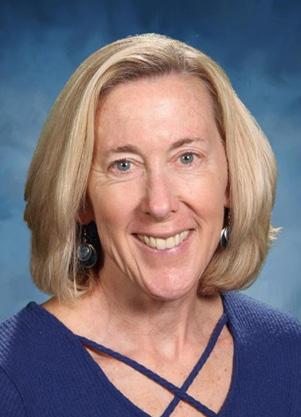
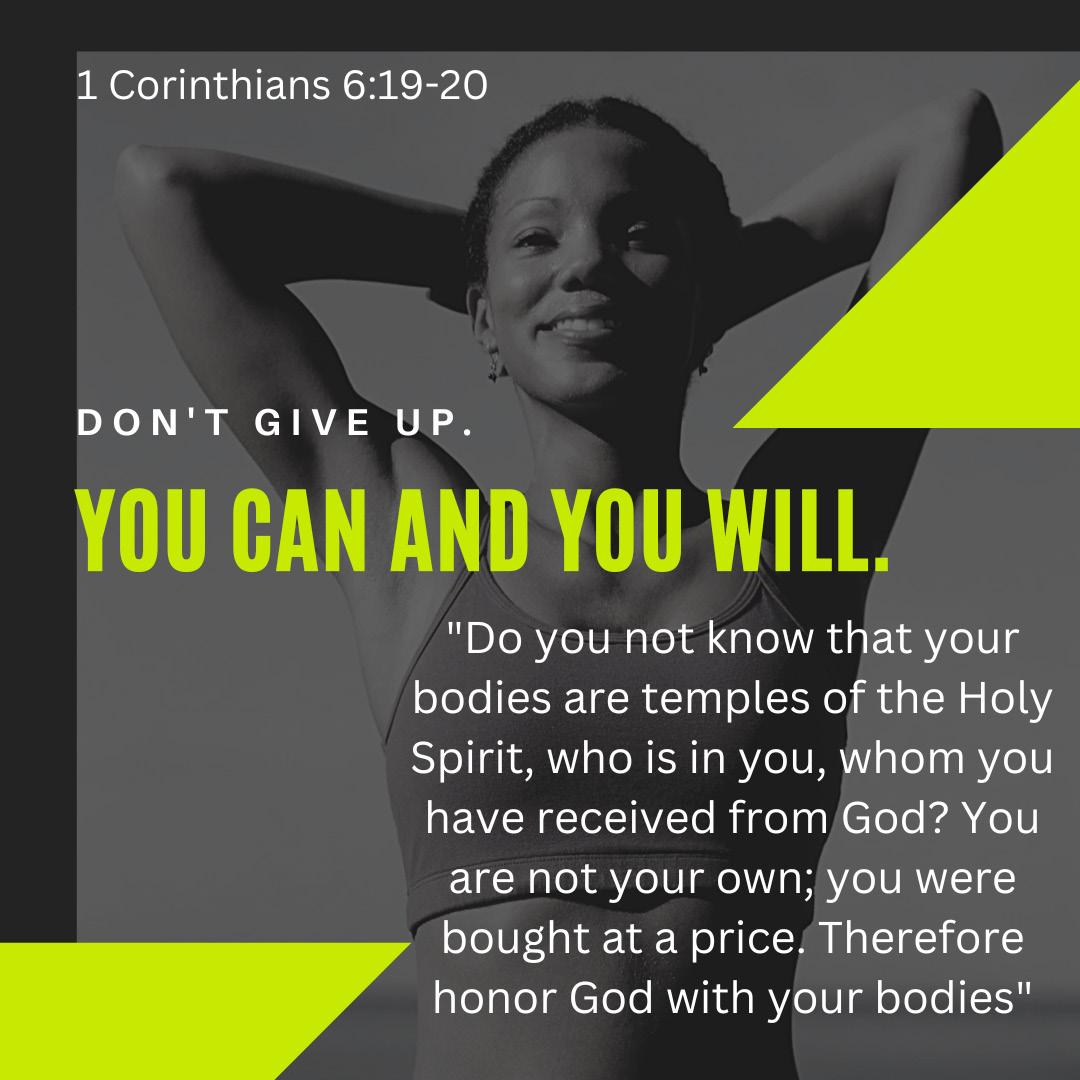
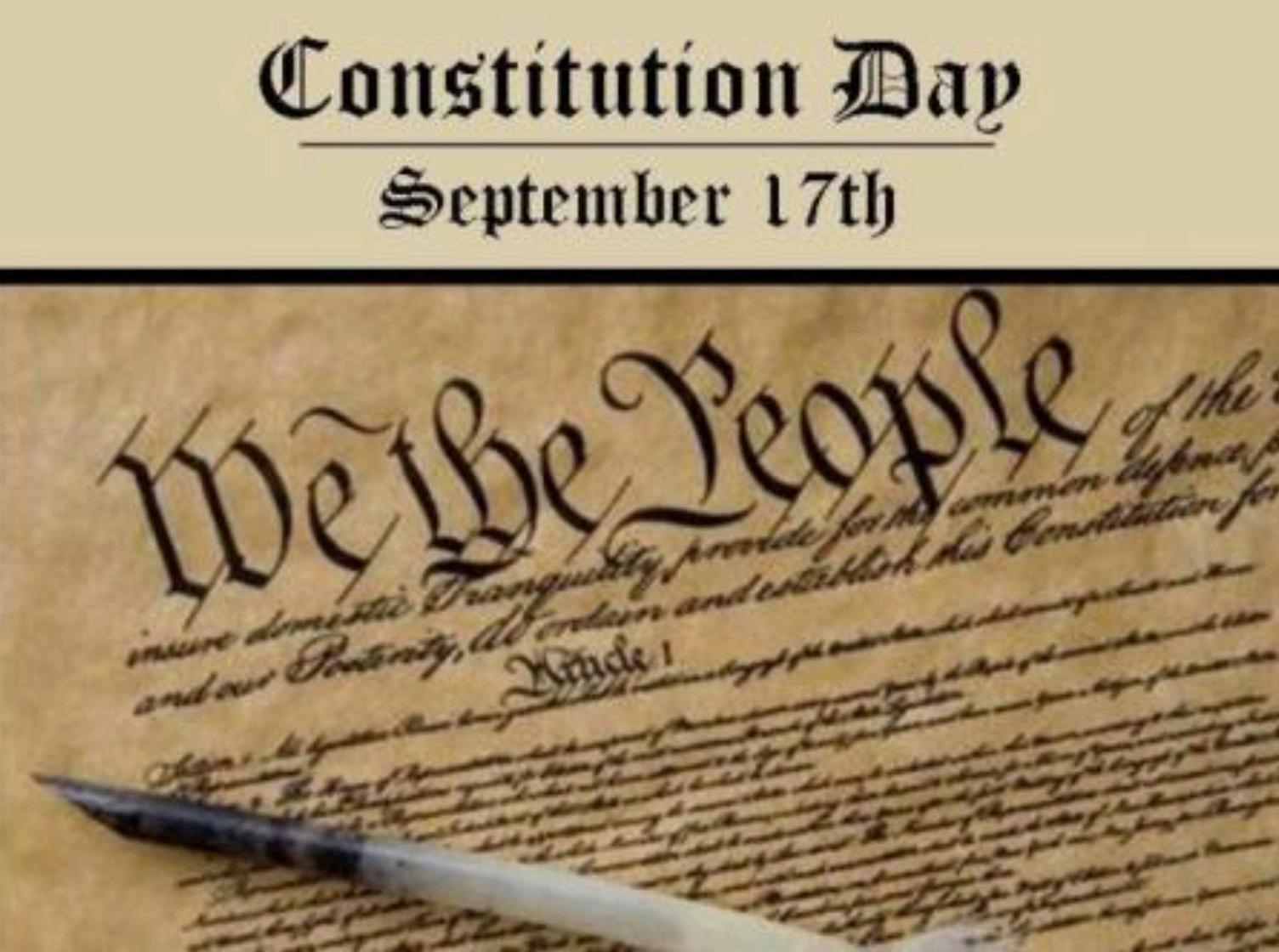

It was Monday, 17 September, 1787. The day was somewhat cooler, but the sun had shown through. It was a pleasant change from the summer heat that had covered Philadelphia since late May. The closing of the shutters of the meeting room in the Pennsylvania State House for privacy had made the interior even more stifling during the preceding three months of debates. However, today was different. There were 38 actual signatories from all of the delegates who had helped craft the Constitution of the United States.
One delegate with thinning gray hair, slightly stooped, and with the assistance of his cane, exited the building for the few steps to his waiting sedan chair. James McHenry, a
fellow delegate, records in his journal that just as Benjamin Franklin was about to be seated he heard a voice from the crowd. He states “A lady asked Dr. Franklin well, Doctor, what have we got, a republic or a monarchy – A republic, replied the Doctor if you can keep it.” McHenry follows up that “the lady was Mrs. Powel of Philadelphia.”
What a perfect closure of the Federal Convention of 1787 where the Constitution of the United States was written.
Having been authorized on February 21, 1787 to meet and amend the Articles of Confederation, the delegates had violated their own instructions from their state legislatures and produced a completely new governing document. With their signing, and with a cover letter by George Washington,
the convention provided the new Constitution to the Congress of the Confederations which was meeting in New York. By unanimous approval, a congressional resolution was issued on September 28, 1787 for the document to be sent to the states for ratification. They recommended that specially-elected conventions be called for the ratification process. On June 21, 1788, New Hampshire became the ninth state to ratify the Constitution, thus fulfilling Article VII of the new Constitution and making it the law of the land.
Much history and some legends surround the three months the delegates spent in Philadelphia in that summer of 1787. However, there were key points that history often overlooks. One occurred on Thursday, June 28.
After a month of debate, disagreement, and starts and stops the convention appeared to be unraveling. It was at this point that James Madison recalls in his Report of the Convention that Benjamin Franklin asked to be recognized. He stood and addressed George Washington the president of the convention.
Franklin was the elder statesman at 81 and previously had seldom spoken. This time it was different, and the room fell quiet as he labored to stand and speak. Holding his notes in his hand, he began. He reminded the delegates of their debates in search of an existing government that might fit the needs of their new nation and how none was found. He said of their search “Methinks (it) a melancholy proof of the imperfection of Human Understanding.” He then reminded them that at the convention in 1776 where the Declaration of Independence was written, that they had started each session with prayer and obviously from the success of the revolution, God had heard their prayers. He stated that he had seen convincing proofs “that God Governs in the affairs of man.”..And “If a sparrow cannot fall to the ground without his notice, is it possible that an empire can rise without his aid?” He closed with “I therefore beg leave to move-that henceforth prayer imploring the assistance of Heaven every morning before we proceed to business, and that one or more of the Clergy of this City be requested to officiate in that Service. NOTE: This is the man that many ill-informed historians would later classify as a deist.
Franklin’s motion for prayer was seconded but was not passed. However, it appears that the entire mood of the Convention changed over the weekend and on Wednesday, the day after the 4th of July celebration, a compromise was offered for resolving the thorny issue of legislative structure and representation by the states. This compromise would
provide the foundation to overcome a difficult hurdle and allowed the convention to move on. Even with several short breaks, by mid-September, they had finished their work on the Constitution. Gouverneur Morris of Pennsylvania was tasked by the Committee of Style to be the final penman for the document, and from him we get the wonderful Preamble.
The United States Constitution is the oldest governing document in the world. It is also the shortest at 4543 words including the signatures. Add the 27 amendments and there are a grand total of 7591 words. Most believe that it can be read in less than 25 minutes. By comparison the average state constitution contains 39,000 words.
There was a time in the United States when the Constitution was taught in our schools. It was part of each individual American History class, and the true history was shared with our students. Today, it appears that this is not the case. Today, we call 17 September “Constitution Day and Citizenship Day.” To ensure inclusion of some Constitutional history the Department of Education (DOE) has issued a policy which states that “Each educational institution that receives Federal funds for a fiscal year is required to hold an educational program about the U.S. Constitution for its students on September 17.”
It is sad that our Constitution which should be the pride of our country is not taught completely in every school in the United States. What a shame that this is the same document that George Washington said it “appeared to him to be little short of a Miracle” is now regulated and requires a DOE policy to be acknowledged by every federally funded educational institution on 17 September.
Some years ago the late Supreme Court Justice Ruth Bader Ginsburg reminded us that "We have the oldest written constitution still in force in the world, and it starts out with three words: ‘We, the people.' That sounds like a follow-on to Benjamin Franklin’s comment to Mrs. Powel. Additionally, we might do well to also reflect on his call for God’s help and his reminder that it is “A republic if we can keep it.”
Quentin M. Thomas is a Retired USAF Colonel, author, teacher and popular speaker. His interest in American history and our Constitution has resulted in a decade of teaching a variety of classes on those subjects. He and his wife Suzie make their home in Woodstock and he can be contacted at tthomasgroup@aol.com.

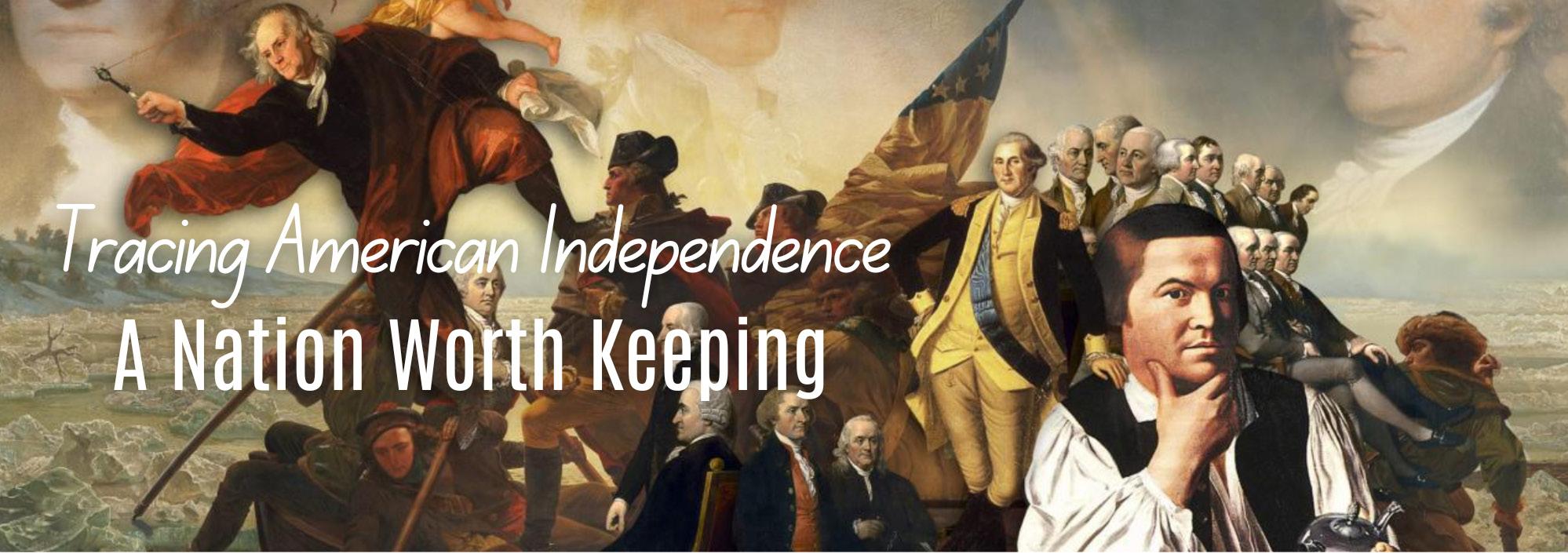
(For You History Nerds and Those who Want a Non-Boring, To-The-Point-Interpretation.)
In this few months preceding America's next presidential election, there seems to be more attention to our country's history and the rights of Americans, and where our Constitutional rights actually came from. Who are we as a people and nation, where did we come from? Let's hop-scotch through the years and land on the highlights as they apply to, and impact, us today. This is not meant to be a comprehensive study of early American history, however, it is written with event summaries.
Let's begin with Italian Christopher Columbus who is remembered for discovering the ‘New World' in 1492. His three ships were the Nina, Pinta, and Santa Maria. According to records, they initially landed in the Bahamas, then to Haiti, Cuba, then on to South America. Theories have it that it was actually the English explorer, John Cabot who landed on North America. His voyages in 1497 and 1498 laid the foundations of England's claim to our country.
province of Newfoundland approximately 1,000 AD. To this point, there were others besides the early American Indians who forged the early days in our land.
Moving on to the first British colony, most people think of the Pilgrims. They actually landed 13 years after the first intended English settlers.
The Virginia Company of London, the trading company chartered by English King James I in 1606, dispatched 144 men and boys, traveling aboard 3 ships, the Susan Constant, Godspeed, and Discovery. Britain's initial goals were to establish England's first colony in North America and to become a World Power, leveraging its new resources. On May 14, 1607, they landed on what became Jamestown Island, Virginia, 60 miles from the entrance of the Chesapeake Bay.

In 1523-1524, another Italian navigator, Florentine Giovanni da Verrazzano, crossed the Atlantic with 50 men and landed on America's east coast at the Carolinas. He then headed north along the coast, eventually anchoring in the Narrows of New York Bay.
In 1534, Frenchman Jacques Cartier planted a cross in North America at the Gaspé Peninsula, along the south shore of the St. Lawrence River extending from the Matapedia Valley in Quebec, Canada, into the Gulf of St. Lawrence. He claimed the land in the name of French King, Francis I and it became the first province of New France.
However, much earlier in history, we don't often remember or recognize is that it was Nordic Viking Leif Erickson who is accredited to have landed on North America first in the Canadian
Now, on to the Pilgrims. On December 22, 1620 the Mayflower landed with 102 men, women, and children aboard. These dedicated Christians literally separated from the ‘Church of England' by leaving England and King James I. Following any other religion in the 1600's was illegal. These ‘Separatist,' sought a new homeland where they could freely worship the God of their Geneva Bible without fear of imprisonment or ongoing persecution. They bravely contracted with merchant-adventurer Thomas Weston to captain a ship that would bring them to the New World, thereby establishing the Plymouth colony.
From that time forward, the British continued to establish colonies in North America. In the 1600s and 1700s, more Europeans migrated to North America seeking religious freedom, economic opportunities, and political liberty.
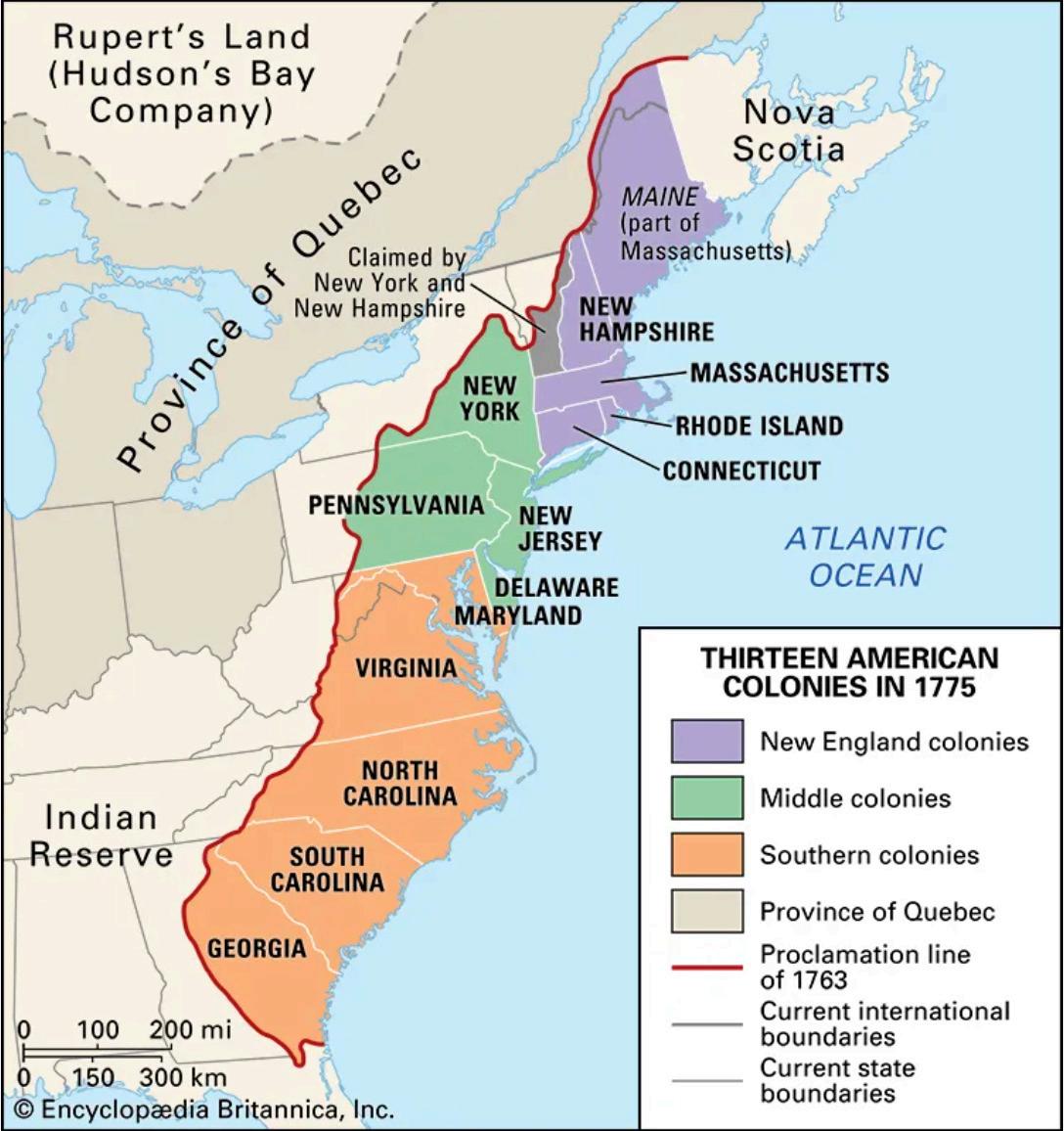
During the 1700s, most of the settlements formed into 13 British colonies, in alphabetical order: Connecticut, Delaware, Georgia, Maryland, Massachusetts, New Hampshire, New Jersey, New York, North Carolina, Pennsylvania, Rhode Island, South Carolina, and Virginia. Each colony formed its own government, however, the English king still controlled them, or tried to.
The Seven Years’ War, 1754 - 1763, was fought between Great Britain and France as a dispute over North American land claims. Virginia’s Governor Dinwiddie sent representative, Lt. Colonel George Washington, to the French urging them to drop their claim of the region of the Ohio and Monongahela Rivers, near modern-day Pittsburgh. Events in Pennsylvania's backcountry would draw England and France into open conflict.
This war left Britain with a great deal of war debt. The crown then looked to the colonies as a financial pipeline to recover lost treasure as it was the colonists who directly benefited. This extreme taxation was new to the colonies, as each had formed their own local government and were able to set their own taxes.
Colonists became agitated because they were no longer able to govern themselves. They were forced to pay sufferingly high taxes to the English empire. They were paying taxes to a far-away government and had absolutely no voice or representation.
On March 22, 1765, the British Parliament passed The Stamp Act, yet another tax without the approval of the colonists. This was to help pay for British troops that were stationed in the colonies during the “Seven Years’ War." The tax, represented by an actual stamp, was required for various forms of papers, documents, even playing cards, and was only purchase-able in hard-to-obtain British silver, not colonial currency. Up to that point, it was one of the most controversial laws passed by the British Parliament.
Based on The Quartering Act of 1765, passed on May 15, the first of 2 similar acts, the colonists became even angrier. They were then forced to allow and welcome British soldiers to sleep and eat in their homes, oftentimes consuming a family's meager rations. Often daughters and wives were raped. At will, livestock was carried away. Generally when troops left a residence, the host family had been so violated that their very existence might end.
October 1765, delegates from nine of the colonies met in New York City as the first united action by the colonies. This is known as the “Stamp Act Congress" which acknowledged that although Parliament had a right to regulate colonial trade, they did not have the power to tax the colonies, as they were not represented in the British Parliament. That November, the Stamp Act went into effect. Just four months later, on March 18, 1766, The Stamp Act was repealed after several months of protests and boycotts which greatly damaged British trade...
However, in retaliation, on the same day, March 18, 1766, Parliament issued the Declaratory Act to the colonies which stated that England's king and Parliament had FULL LEGISLATIVE POWER OVER ALL THE COLONIES.
During 1767 and 1768, British harshness continued. Parliament passed the Townshend Acts which placed heavy taxes on several essential goods that the colonists depended on and enjoyed, including tea. These Acts allowed the British to tighten their grip on the colonies and regain trade compliance. Additionally, these Acts were to raise revenues to pay the salaries of the colonies' governors and judges so they would remain loyal to the British government. These new regulations included: The Revenue Act, The Commissioners of Customs Act, The Indemnity Act 1767, The New York Restraining Act, and The Vice Admiralty Court Act.
Tensions between the colonies and the British heightened. Further occupation of England's armies brought about open hostilities from colonists. The fight over taxes and representation led to violent outbreaks in the streets between Bostonians and British customs officials.
On March 5, 1770, seven British soldiers fired into a crowd of volatile Bostonians, killing five, wounding another six, and angering the entire colony. The event, known as the Boston Massacre, was the result of these open hostilities.
On December 16, 1773, the Boston Tea Party revolt took place. A radical group of Bostonian Patriots who aligned themselves with the Sons of Liberty threw 340 crates of tea into the Boston Harbor, destroying it all. This was in protest to the increasing taxation by the British Parliament on tea imported from China.
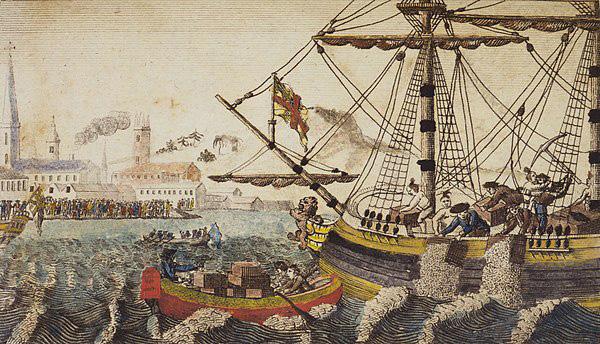
Continued on Next Page
To tighten their reign over the American colonies, over the next several months, the British passed a series of Acts known as The Intolerable Acts.
- On March 25, 1774, The first of these acts was The Boston Port Act which closed the Boston Harbor to exportation. The act was meant to force Boston into paying for all the tea that was dumped into the harbor during the Boston Tea Party.
- On May 20, 1774, The Massachusetts Government Act revoked Massachusetts' charter which dated back to 1691. It brought Massachusetts directly under British control. All town meetings' decisions were no longer in the hands of the colonists.
- Also on May 20, 1774, The Administration of Justice Act provided that the royal governor could move trials of royal officials who were accused of capital offenses, including murder, to Great Britain or within the British Empire. Colonists believed that these relocated trials would result in acquittals for those accused. Colonist referred to this as The Murder Act.
- Passed June 2, 1774, The Quartering Act was designed to “improve housing options" for regular troops stationed in the colonies. It allowed soldiers to be quartered in empty houses, barns, and other outbuildings if colonial officials failed to provide adequate barrack housing. History reveals that soldiers were allowed to greatly abuse this provision.
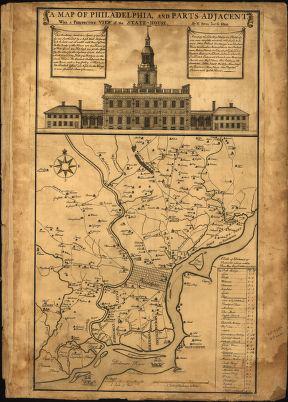
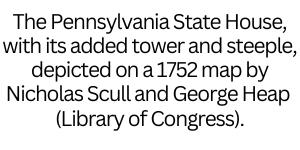
September 5 - October 26, 1774 marked the meeting of the First Continental Congress. Fifty-six representatives from 12 of the 13 colonies met at Carpenters' Hall in Philadelphia, which was renamed Independence Hall. They discussed British laws that were unfair to their new, aspiring, free way of life and resolved that the colonists needed more control over, their form of government.
The outcome of the First Continental Congress was a petition to King George III calling for the repeal of The Intolerable Acts.
No reprieve from Britain came and British soldiers' presence was bitterly felt. That next spring on March 23, 1775, signaling the upcoming revolt, Patrick Henry gave the infamous speech in the Virginia House of Burgesses, “Give me liberty or give me death!” This was the precursor to engaging in a war against the most powerful military in the world of that day. The odds were against this emerging nation. By all human odds, they were meant to fail. Continued from Previous Page
Weeks later, Apr 19, 1775 marked the beginning of the American Revolution with the Battles of Lexington and Concord. British General Thomas Gage received orders to suppress the rebellious Massachusetts' colonists by confiscating their military weapons from storehouses in Concord. This began the famous nighttime cries of Paul Revere, “The Regulars are coming!" Regulars, or the Redcoats, were other names for British soldiers.
While the British force of 700 men marched from Boston to Concord, they were met on Lexington Green by 77 local minutemen. It is unclear who fired the first shot, however, it was here that “the shot heard ‘round the world'” was fired. Lexington's militias dispersed and the British continued toward Concord. Unbeknownst to the British, most of the colonists' military supplies had already been hidden or destroyed. Approximately 400 American fighters, led by Colonel James Barrett, pushed back 90 British soldiers guarding the North Bridge, forcing them to retreat in disgrace.
On May 10, 1775, less than one month after the first battles at Lexington and Concord, the Second Continental Congress convened at Independence Hall. Their role became the ‘de facto' government of the 13 colonies as war sparked. This Congress disbanded 6 years later on March 1, 1781. Much of our nation's rich history took place during these pivotal years.
Many of the men who attended the First Continental Congress returned for the second, including George Washington, Patrick Henry, and cousins John and Samuel Adams. Newcomers included Thomas Jefferson, Benjamin Franklin, James Madison and John Hancock.
“The delegates wasted no time deliberating the nature or extent of their authority; instead they convened in the spirit of a council of war,” says Benjamin Irvin, History Professor. The Continental Congress established an army, navy, post office, and issued currency. “In this manner, and without hesitation, the Continental Congress began to assume legislative and executive responsibility.” The Congress also recommended that the colonies draft their own constitutions.
The Olive Branch Petition was drafted and on July 5, 1775 was sent to King George III in an attempt to squelch the new war.
Three committees were appointed on June 11, 1776. One of the committees was tasked with determining what form the confederation of the colonies should take. This committee was composed of one representative from each colony. John Dickinson, a delegate from Delaware, was the principal writer.
During these initial meetings, they also unified the colonies, appointed diplomats, formalized Patriot militias into the Continental Army, and appointed George Washington as the commander-in-chief of the army.
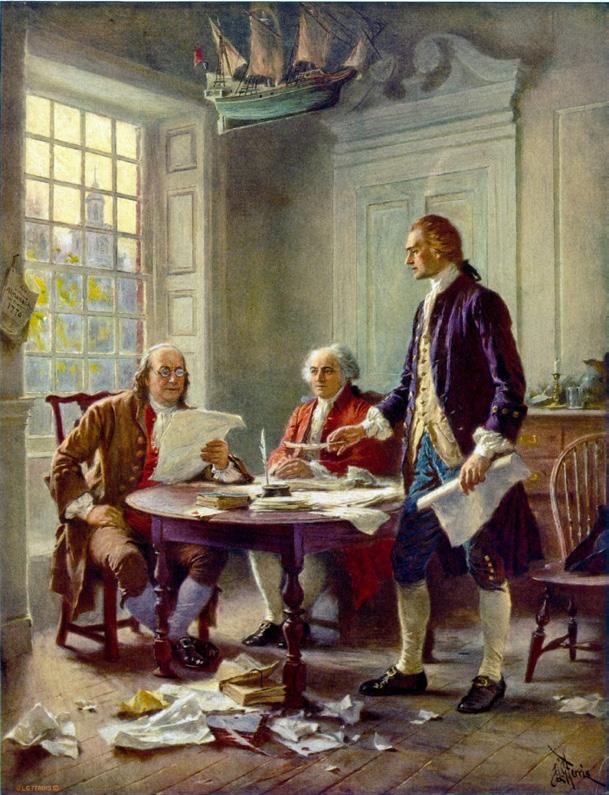
On June 7, 1776, Richard Henry Lee made a motion in Congress to declare independence. Other members of Congress were amenable but thought some colonies were not quite ready to take this step. The kind of declaration discussed would be considered an act of treason by England. What would be the repercussions?
However, four days later Congress did form a committee of five to draft a declaration of independence. It is widely accepted that it was written by Thomas Jefferson from Virginia. Others on the committee were John Adams from Massachusetts, Benjamin Franklin from Pennsylvania, Robert R. Livingston from New York, and Roger Sherman from Connecticut who helped edit the document and removed hostile language that may further enrage the king.
Finally on July 4, 1776 the final draft of The Declaration of Independence was adopted. It announced and declared that the colonies were severing their ties to, and were considering themselves independent from, Great Britain. This document also articulated the rights to “life, liberty, and the pursuit of happiness” for the colonists. They were declaring basic freedoms that no government could take away.
Jefferson later admitted that he was simply looking to consolidate what was on the“mind of Americans" that was at the heart of the current American Revolution. This document contained their many grievances against King George III which further explained why the American colonies were separating from Great Britain.
Overall, throughout the colonies, not everyone was supportive of the Declaration of Independence. As word and details of the document circulated, great divisions between family and neighbors became outwardly evident. This was truly a treasonous declaration against Britain and caused great fear for many. Best estimates are that Patriots supported independence from Britain at 40-45% of the population. British Loyalists were comprised of 15%-20%. “Fence-sitters,” totaled approximately 35-45%. There were no easy positions to take during those tumultuous days.
Today, many tout that America was not created on a foundation of biblical truths. However, God is referenced four times in the Declaration of Independence, using the verbiage “Laws of Nature and of Nature’s God,” “Supreme Judge of the world,” “the Creator,” and “divine Providence.” (In addition, The Articles of Confederation spoke of the “Great Governor of the World.”)
Of the 56 men who signed the Declaration, an overwhelming majority, if not all, identified themselves as Christians. Four
were either present or former ministers, and a number of the signers were the sons of clergy. At least half of them had studied “divinity” at their various universities. Denominations that were represented include Episcopalians, (Anglicans - the old church of England religion), Congregationalists, Presbyterians, Quakers, Unitarians, and one Roman Catholic.
On September 9, 1776, the Second Continental Congress adopted a new name for what had been called the “United Colonies.” The name “United States of America" has remained since then as a symbol of freedom and independence.
June 14, 1777, the first official American flag, containing 13 Stars and 13 Stripes was adopted by the Continental Congress adopted.


Later that year, on November 15, 1777, The Articles of Confederation were adopted by the Continental Congress. This document served as the United States' first constitution. It was in force until 1789 when the present-day Constitution went into effect. The Articles of Confederation established a national government with guidelines for how Congress should operate. The document also determined that the ‘states' should speak with a united voice in international relations and coordinated the war effort underway.
In 1778, France entered the war on the side of the colonists, turning the conflict into an international one.
The American Revolution officially ended September 3, 1783, with the signing of the Treaty of Paris. The surrender of Cornwallis and his army in October of 1781 convinced the British government to negotiate an end to the war and recognize America’s independence.
While the Articles of Confederation was a good beginning of a national self-government, the provisions were not strong enough to enforce the new states’ compliance. Just a few years after the Revolutionary War, the states’ disputes over territories, war pensions, taxation, and trade threatened to collapse our new nation. The federal government needed to print a national currency and better regulate commerce.
Continued on Next Page
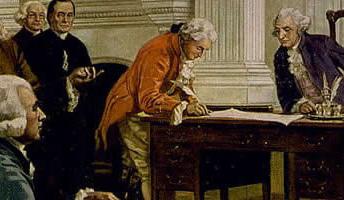
James Madison, Alexander Hamilton, and George Washington convinced Congress to organize a Grand Convention of state delegates to work on revising the Articles of Confederation. The Constitutional Convention in Philadelphia met between May and September of 1787 to address these problems.
As a result of revising the Articles of Confederation, the United States Constitution emerged which established a federal government with more specific powers and came into effect in 1789. This has served as the basis of the United States Government ever since. You can read more about the Constitution on page 16.
Also in that year, on April 30, 1789, George Washington was inaugurated as the first President of the United States at Federal Hall in New York, then the nation's capitol.
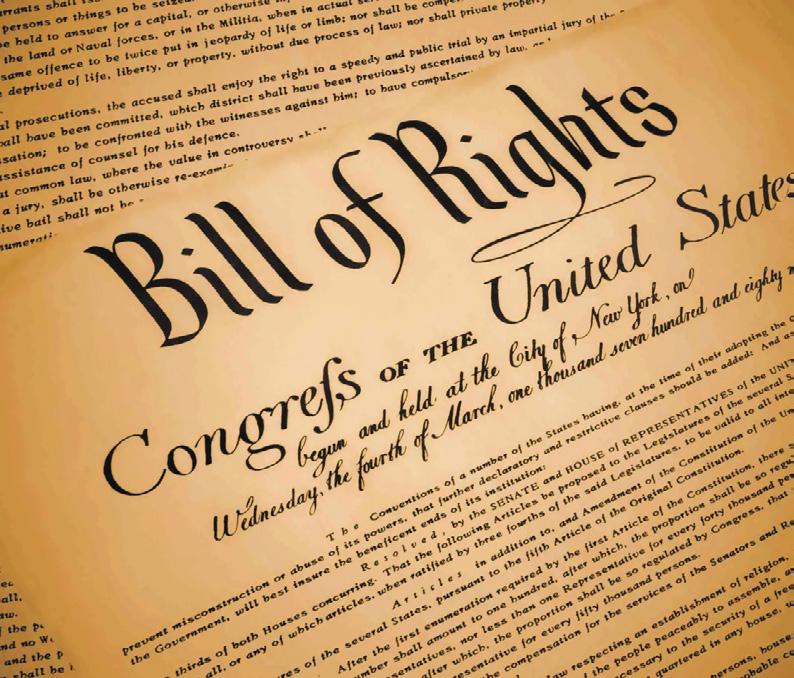
On June 8, 1789 during the First Congress, James Madison introduced a list of amendments to be made to the new Constitution to further protect the rights of American citizens, remembering the injustices of British rule. It is recorded that he “hounded his colleagues relentlessly.” After much debate, the House passed a joint resolution containing 17 amendments based on his proposals. The Senate made changes to adopt 12 amendments. In September, there came a meeting of the minds.
On October 2, 1789, President Washington sent these 12 amendments to the states for ratification. Two years later, by December 15, 1791, three-fourths of the states agreed to 10 of these (the first two were not adopted), now known as the “Bill of Rights:”
First Amendment: freedom of religion, freedom of speech, freedom of the press, and freedom of assembly
Second Amendment: the right of the people to keep and bear arms
Third Amendment: restricts housing soldiers in private homes
Fourth Amendment: protects against unreasonable search and seizure
Fifth Amendment: protects against self-testimony, being tried twice for the same crime, and the seizure of property under eminent domain
Sixth Amendment: the rights to a speedy trial, trial by jury, and to the services of a lawyer
Seventh Amendment: guarantees trial by jury in cases involving a certain dollar amount
Eighth Amendment: prohibits excessive bail or fines and cruel and unusual punishment for crimes
Ninth Amendment: listing of rights (in the Bill of Rights) does not mean that other rights are not in effect
Tenth Amendment: power not granted to the Federal Government is reserved for states or individual people
The three documents that are the cornerstone of the United States of America are the Declaration of Independence (1776), the Constitution (1789), and the Bill of Rights (1791). As you can see, this country's foundation was not formed overnight.
To finish where we began, the question looms, where do our rights as American citizens come from? The preamble to the first of these important documents, the Declaration of Independence states:
“We hold these truths to be self-evident, that all men are created equal, that they are endowed by their Creator with certain unalienable Rights, that among these are Life, Liberty and the pursuit of Happiness."
The rights of Americans do not come from government, they come from God. These early documents were drafted by, and adopted by, men of God. We are all created in God's image and are called to become the men and women we were created to be. It is up to us to continue the legacy of protection of these freedoms we hold most dear.
The Christian foundation of this great nation is undeniable. While the writing of these documents seemed treasonous as the colonists struggled to live free from the corrupt British government, these brave men and families sacrificed greatly for the generations to come. It is up to us to continue their great legacy and bravely do what we can to protect the sovereignty of these United States of America. <>< <>< <>< <>< <><

Igrew up attending church with my family, and as the years passed by eventually my father and I were on our own. We were present for all 3 services my church had each Sunday, 8am, 9:15am and 11am. Most Sundays I took part in at least 2 of the services, while my father, as was his role and duty, served in all 3 services. I tell you this as background so that you understand I spent a great deal of time “behind the scenes” so to speak in a church setting. I am purposefully trying to mask the denomination in an effort not to offend anyone with some of the things I say here, because that would serve no purpose at all.
My world view, and most definitely my view of the church and its leaders was influenced a great deal by my exposure to a great number of different ministers/clergy/pastors. I have known some incredibly wonderful men of God filled with His love and Spirit and wisdom. I have known others whose devotion to things of the Spirit was less than certain, and indeed whose teaching and beliefs were less than uplifting and Godly.
I am drawn to read and reflect on what the Apostle Paul had to say about the Church and its leaders - 1 Corinthians 3:3-9 NIV
“Brothers and sisters, I could not address you as people who live by the Spirit but as people who are still worldly—mere infants in Christ. I gave you milk, not solid food, for you were not yet ready for it. Indeed, you are still not ready. You are still worldly. For since there is jealousy and quarreling among you, are you not worldly? Are you not acting like mere humans? For when one says, “I follow Paul,” and another, “I follow Apollos,” are you not mere human beings?
What, after all, is Apollos? And what is Paul? Only servants, through whom you came to believe—as the Lord has assigned to each his task. I planted the seed, Apollos watered it, but God has been making it grow. So neither the one who plants nor the one who waters is anything, but only God, who makes things grow. The one who plants and the one who waters have one purpose, and they will each be rewarded according to their own labor. For we are co-workers in God’s service; you are God’s field, God’s building."
Paul expresses to the church at Corinth how he longs for them to
By Bill Saunders
“grow up” and to become mature in the things of God for Paul to be able to share with them the meat of the Gospel. Their focus was still on the things of this world and indeed they were hung up on which of their teachers was more important, Paul or Apollos. Paul is trying to break them of their petty quarreling and remind them that it is God who is doing the work in them. The Corinthian believers should not be caught up on whether Paul or Apollos was the more important teacher, but that they should be following and focusing on Jesus, because that is where the real growth would occur in their lives.
This message still rings true today I believe. The Western church and culture have a celebrity mindset. Many get caught up in following the headliners and big names of the Christian world. There is a real danger in following a celebrity as opposed to the One who sent them, if indeed they were sent. The company I worked for promoted and transferred me to Charlotte NC in October of 1987. My family completed the move in March of 1988, just in time to watch the downfall of Jim and Tammy Faye Baker on the nightly news. The media were thrilled to expose the story, and many elderly Christian believers lost their life savings in the $158 million scandal of PTL. Jim Baker later confessed to another minister that he never lost his faith, but his fear of God, that righteous awe of the King of Kings and Lord of Lords.
I think as Christians we need to make certain that it is Jesus to whom we devote our life and attention. Otherwise, we may get caught up in human beings who we all know are imperfect and may through no fault of their own and unconsciously let us down or do something to cause us to question our faith.
Jesus is the Way, the Truth, and the Life. In Him we live and move and have our being.
Bill enjoys retirement spending time with friends and family. He and founder Lynne Saunders have been married for 42 years, have 3 beautiful grown daughters and 6 awesome grandkids. He sings in the Mt. Paran Choir and loves sitting on the back deck looking at the woods and flowers on a pretty evening.
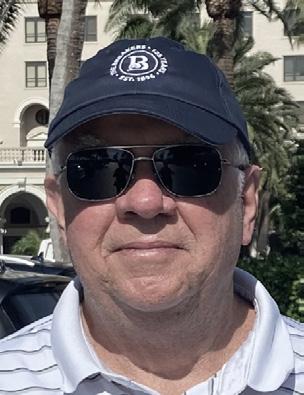

Equipment
• Cutting Board
• Sharpe Knife
• Whisk
• Small Mixing bowl
• Serving Bowl
Ingredients
• 1 cup Greek Yogurt, plain
• ¼ cup honey
• 1 tablespoon lemon juice
• 2 teaspoons apple cider vinegar
• ½ tablespoon poppy seeds
• 1 ½ lbs broccoli florets, bite-sized pieces
• 1 cup fresh blueberries
• 1 large apple, diced
Dressing Ingredients
• 1 1/2 cups fresh watermelon
• 2 cups cold fresh or frozen strawberries
• 2 frozen banana
• Juice and zest of half a lime
• 2 tbsp plain yogurt
• 1 tbsp maple syrup
Instructions:
Instructions:
In a medium bowl, whisk to mix yogurt, honey, lemon juice and poppy seeds. Set aside. In a serving bowl toss together the remaining ingredients. Pour dressing over the fresh ingredients and mix well. Refrigerate to chill before serving.
Equipment
• Cutting Board
• Large Sharpe Knife
• Blender
• Measuring Cups and Spoons
• Citrus Zesting Tool

Add all of the ingredients into a high speed blender making sure the watermelon is added first. Cover with a lid and blend on high, using a tamper to help push fruit towards the blade. Pour your smoothie into a glass... enjoy!
Ingredients
• 2 cups peeled & chopped fresh peaches & optional slices or peel slices for garnish

Instructions:
• 5 cups water, divided
• 1/2 cup sugar or sugar substitute to taste
• 2 lemons, approx 1/3 cup juice, optional slices for garnish
• Ice when ready to serve
Equipment
• Cutting Board
• Sharp Knife
• Medium Sauce Pan
• Cheese Cloth
• Serving Bowl
PEACH SIMPLE SYRUP: Combine chopped peaches, ½ cup sugar, and 2 cups water in medium pan. Bring to a boil over medium heat, stirring often. Reduce and simmer 5-10 minutes, or until peaches become soft. Remove from heat and cool to room temperature. Strain through cheese cloth.
LEMONADE: Juice lemons in small bowl. In a pitcher, combine peach syrup (there should be around 1 cup), lemon juice, and 3 cups of water and stir. Add ice if you serve it immediately.
Ingredients
• ¾ cup soy sauce, can use low sodium
• ¼ cup water, divided
• 1 tablespoon sesame oil
• ⅓ cup brown sugar
• ¼ teaspoon ground ginger
• ½ teaspoon crushed red pepper flakes
• 3 large cloves garlic, minced
• 2 tablespoons ketchup
• 1 can pineapple rings (reserve ½ cup of the juice for the marinade)
Instructions:
• 3 large boneless
skinless chicken breasts, sliced in half lengthwise to make 6 thin fillets of chicken
• 2 tablespoons cornstarch
• 2-3 scallions, sliced diagonally, for garnish
Equipment
• Grill
• Grill Utensils
• Whisk
• Measuring spoons
• Large Sharp Knife
• Small Bowl
• Small Sauce Pan

• Platter for Serving
Whisk soy sauce, water, sesame oil, brown sugar, ground ginger, red pepper flakes, garlic, ketchup, and reserved pineapple juice until well combined. Pour this marinade over chicken and let it sit for at least 30 minutes or overnight. (You can add these ingredients to a zip plastic bag - remove air so the marinade penetrates better.)
Prepare grill and heat to medium-high. Place chicken pieces and pineapple rings separately on the grill. Reserve the marinade to make the sauce. Grill chicken for 3-5 minutes on each side depending on thickness. Rotate position midway to achieve criss-cross grill marks if desired. Remove chicken and pineapple from grill and allow to rest for 5 minutes. Watch the pineapple on the grill as it may burn quicker because of its sugar content.
While the chicken and pineapple rest, strain the marinade into a small sauce pan. Heat over medium heat until it comes to a slight boil. Turn it down and simmer at least 5 minutes. In a separate small bowl, whisk cornstarch with water. Add two tablespoons of the hot liquid and dilute the cornstarch slurry, mixing well. Whisk cornstarch mixture to rest of liquid and reduce to low heat to simmer for a couple minutes to thicken the sauce.
To serve, Dip the meat in sauce. Then top chicken pieces with pineapple slices and drizzle with remaining sauce. Add chopped scallions and serve immediately.

Instructions:
Ingredients
SALMON:
• (4) 5-6 ounce salmon fillets
• 2 tbsp chopped fresh oregano
• 3 garlic cloves, minced
• 3 -4 tbsps olive oil
• Juice of one lemon
• Salt/ Pepper to taste
TOPPER:
• 1 cup halved cherry tomatoes
• ⅔ cup green California ripe olives, pitted and halved
• ½ English cucumber, diced
• ¼ cup fresh chopped parsley
• 3 tbsps chopped fresh basil
• ½ cup feta cheese, crumbled
• Olive oil
• Salt /Pepper to taste
Salmon: Coat salmon with olive oil and fresh squeezed lemon. Sprinkle dry seasonings to all sides of each fillet. Let sit for 10 minutes. Heat a generous amount of olive oil in skillet over medium-high heat. Pan-fry fillets, skin side down for 5 minutes. Gently flip fillets and cook for an additional 2-3 minutes on the other side. While salmon is cooking, in separate bowl, mix the topper ingredients. To serve, top each piece of salmon with topper ingredients.

Instructions:
Ingredients
• 1 can apple pie filling 21 ounces
• 6 soft flour tortillas medium
• 4 tablespoon butter melted
• ½ cup sugar
• 1 tablespoon ground cinnamon
Equipment
• Air Fryer & Basket
• Shallow Flat Dish
• Measuring Spoons
• Whisk / Tongs
Lay tortillas out on flat surface. Spoon 2 tablespoons of apple filling down the center of each. Roll tightly to form taquito. Brush with melted butter. In a shallow, flat dish, mix the sugar and cinnamon, then roll the buttered taquito in the mixture, coating the outside. Place in the air fryer basket, seam side down, without overlapping. Air fry at 350 degrees F for 9-11 minutes, until the taquito is golden and crispy. Use tongs to flip them over, and air fry for an additional 3-4 minutes, or until they reach your desired crispness.
•


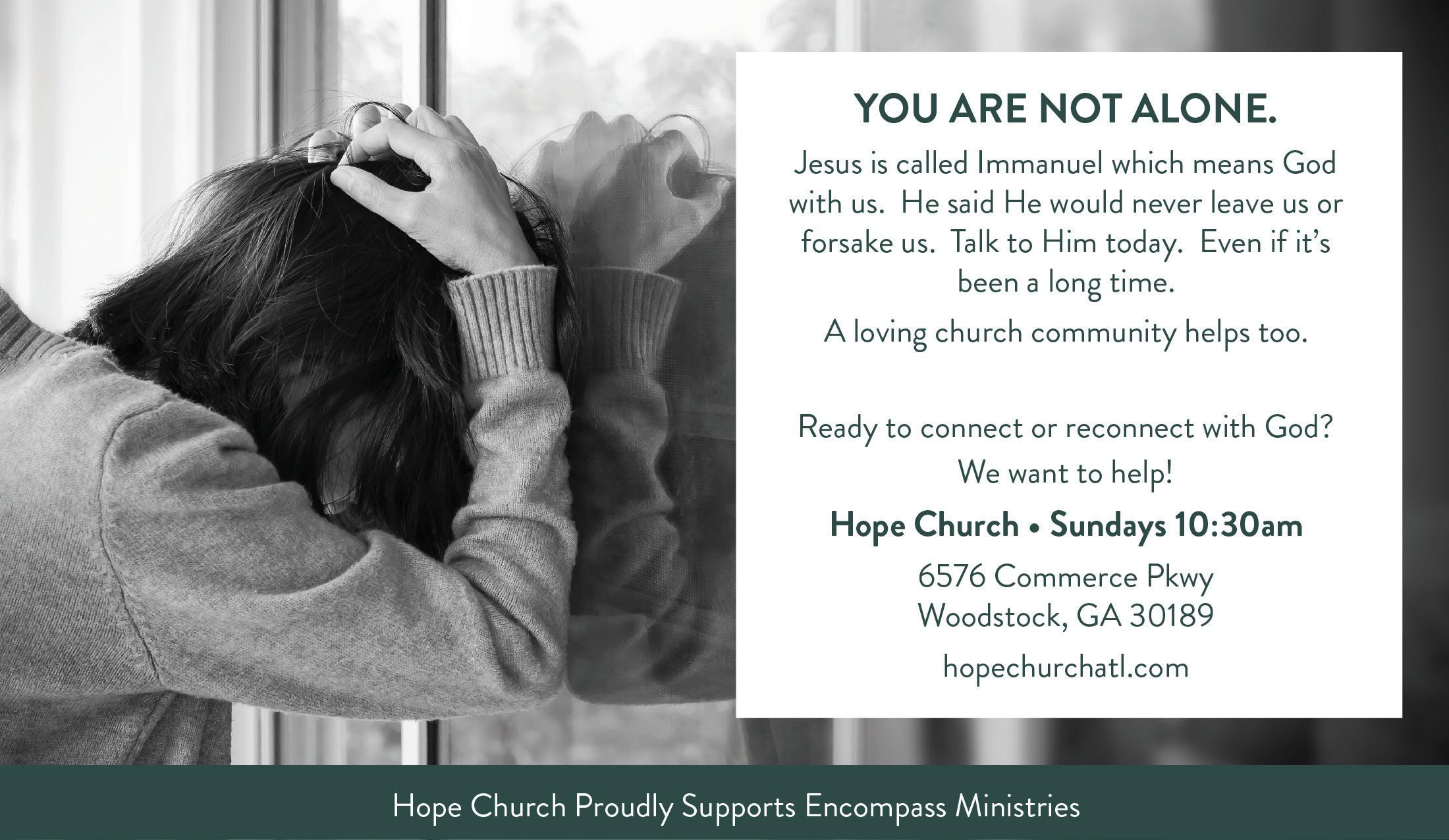







Summer is for playgrounds and fun. When nutrition is compromised, something so simple can be exhausting. Thankfully, Encompass Ministries is here to not only help kiddos like this and their families have good food to eat... Encompass also offers “encompassing" programs to equip adults to get on their feet so they can provide for their families. Will you help us? Every Donation Makes a Forever Impact

Please consider making a donation today and becoming a monthly donor. It's easy online: EncompassMinistriesInc.org/donate
